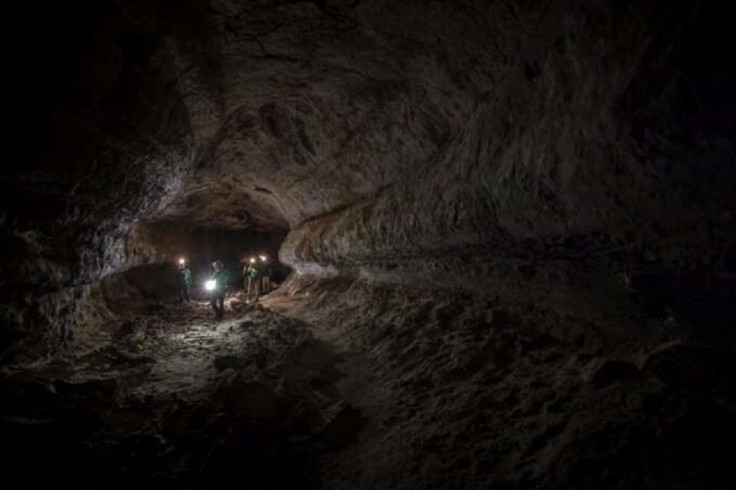Moon, Mars Lava Tubes Are Massive Enough For Future Settlements, Shows Study

KEY POINTS
- Researchers found that lava tubes on Mars and on the Moon are much wider than Earth's
- They are also quite stable because of the lower gravity attraction
- The lava tubes could make excellent exploration targets and possible future settlements
Researchers have found that the lava tubes on Mars and the Moon are quite similar to those on Earth. But they are much wider than the Earth lava tubes, making them excellent candidates for future exploration.
A lava tube is a natural underground passage through which lava travels beneath the surface of a lava flow. Once a diversion has happened or the eruption has ended, the tunnel is drained and an empty underground cave is left behind. Such lava tubes are present on Earth and also on other celestial bodies such as the Moon and Mars.
For a new study, researchers studied the subsurface lava tubes on the Moon and Mars using data from interplanetary probes and compared them to the lava tubes on Earth. Upon studying the lava tubes, the researchers determined that they are actually similar to Earth's lava tubes but are much larger. The Martian tubes are 100 times wider than Earth's lava tubes while the lunar tubes are 1,000 times wider.
"The latter are so big they can contain Padua's entire city center," study co-author Riccardo Pozzobon of the University of Padua, Italy, said in a news release.
Even as massive as these lava tubes are, they remain well within the roof stability threshold because of the lower gravitational attraction, making them quite stable. This means that these subsurface locations could make for excellent exploration targets and potential settlements where explorers would be in an environment protected from radiation and micrometeorite impacts and where the temperature would be more stable.
On the Moon, the surface experiences about two weeks of daylight followed by two weeks of darkness. Having a subsurface settlement could then make for more stable temperatures than if the explorers are on the surface.
"Space agencies are now interested in planetary caves and lava tubes, as they represent a first step towards future explorations of the lunar surface (see also NASA's project Artemis) and towards finding life (past or present) in Mars subsurface," study first author Francesco Sauro, of the University of Bologna, said.
Study co-author Jo De Waele, also of the University of Bologna, noted that the European Space Agency has been carrying out training programs on the exploration of underground systems.
"They are specifically looking for systems that would land on the lunar surface to operate missions exploring lunar tubes," De Waele said. "So far, 36 astronauts from five space agencies have received training in cave hiking; moreover, six astronauts and four mission and operation specialists have received geological field training."
The study describing the team's findings is published in the journal Earth-Science Reviews.
© Copyright IBTimes 2025. All rights reserved.






















